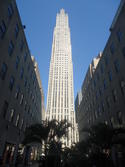Senior citizen populations continue to increase faster in the suburbs and exurbs of major US metropolitan areas (over 1,000,000 populations). This is the conclusion of a City Sector Model analysis of the small area (zip code) trend from 2010 to the latest American Community Survey (ACS) 5-year data (2012/2016). read more »
Suburbs
The Screwed Millennial Generation Gets Smart
It’s been seven years since I wrote about “the screwed generation.” The story told has since become familiar: Millennials, then largely in their twenties, faced a future of limited economic opportunity, lower incomes, and too few permanent, high-paying jobs; of soaring college debt and structural insecurity (PDF). read more »
- Login to post comments
What If Everything You Know About The Suburbs Is Wrong?
With 52 essays from 74 authors, Infinite Suburbia’s 732 pages comprehensively analyze the suburbs from the perspectives of architecture, design, landscape, planning, history, demographics, social justice, familial trends, policy, energy, mobility, health, environment, economics, and applied and future technologies. Organized by theme in an index that best resembles a spider’s web, the book is meant to be read in a nonlinear fashion, reminiscent of a choose-your-own-adventure novel. read more »
- Login to post comments
Suburbs & Exurbs Grab Nearly All Metropolitan Growth
The pattern of suburban (and exurban) population growth in the suburbs and exurbs that has dominated the United States since World War II has returned and is intensifying. This is evident from the latest American Community Survey (ACS) data for the 53 major metropolitan areas (more than 1 million population) as analyzed by the City Sector Model (See Note: The City Sector Model). read more »
- Login to post comments
The Urban Revival Is an Urban Myth, and the Suburbs Are Surging
The past decade has seen a gusher of books arguing for and detailing the supposed ascendency of dense urban cores, like the inimitable Edward Glaeser’s influential Triumph of the City: How Our Greatest Invention Makes Us Richer, Smarter, Greener, Healthier, and Happier, and about the ‘burbs as the slums of the future, abandoned by businesses and young people, like Leigh Gallagher’s read more »
- Login to post comments
The Future of America’s Suburbs Looks Infinite
Just a decade ago, in the midst of the financial crisis, suburbia’s future seemed perilous, with experts claiming that many suburban tracks were about to become “the next slums.” The head of the Department of Housing and Urban Development proclaimed that “sprawl” was now doomed, and people were “headed back to the city.” read more »
- Login to post comments
Orange County’s Low Hanging Fruit
There are things that we can do as a society to work through our big structural difficulties at an institutional level. And there are other things that can be done independently at the household level by individuals. I don’t have the technical skills, political skills, social skills, credentials, patience, or desire to engage the large scale systems. To be honest, I don’t think most people do. But there are all sorts of things that ordinary people can and should do on their own that can make a huge difference on the ground at room temperature. read more »
- Login to post comments
Infinite Suburbia
The following is an excerpt from the introduction of Infinite Suburbia, a collection edited by Alan M. Berger and Joel Kotkin, with Celina Balderas Guzaman: read more »
- Login to post comments
California Politicians Not Serious About Fixing Housing Crisis
California’s political leaders, having ignored and even abetted our housing shortage, now pretend that they will “solve it.” Don’t bet on it. read more »
- Login to post comments
The South's Big Cities Moment
August’s tragic events in Charlottesville kickstarted a somber debate about the appropriate way to commemorate the war that gave all Americans their freedom. It also triggered a conversation about whether the south’s legacy of rebellion and independence – with slavery a painful and regretful part of its past – is a legacy worth remembering. read more »
- Login to post comments






















